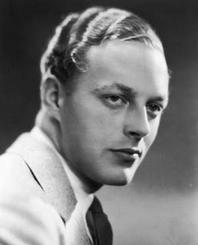
Douglas Walton
ACTOR
Douglas Walton was from over-the-border Ontario, and like so many Canadian actors the logical course was Chicago and then New York. Being of slight frame and a boyish face with a tuft of blond hair completing that latter effect, Walton looked the part of ineffectual, effeminate, snobbish sophisticates, whining cowards, and other assorted wimps that seemed always in demand during Hollywood's heyday of the 1930s and 1940s. He evidently had little time for theater work for by 1931 Hollywood casting directors were availing themselves of his look and manner. From just small character roles, he began to receive beefier lines to accent the parts. Walton's soft tenor voice lent well to the weakling roles, but he could retune it for dramatic moments displaying his talent depth, an early example being his young Albert de Mondego in The Count of Monte Cristo (1934) in which he registers a fine dramatic range. A year later another opportunity presented itself. One of the real gems in Bride of Frankenstein (1935) is the opening scene with Elsa Lanchester as Mary Shelley along with Walton as husband Percy Shelley and American character actor Gavin Gordon as Lord Byron. In one of the old Universal tall sound stages with a huge fireplace and an even more huge picture window looking out on a stormy night, the histrionics of these three make the film, if nothing else did - but Bride as a sequel lends enough to campiness to make it work wonderfully. Walton continued his run of high profile film outings that same year with the much-anticipated Mutiny on the Bounty (1935) starring Clark Gable. As the jealous and priggish midshipman Stewart, he lends the right characterization to make the part his own. But probably his best role of the period is his Lord Darnley in Mary of Scotland (1936) in which he gives an over-the-top, playing-to-the-hilt rendition of the effeminate noble weakling who by default weds Katharine Hepburn as the vivacious Mary Stuart. Director John Ford was noted for pushing his actors, and he must have been satisfied with Walton and his impressive registering everything in the human emotional range from Darnley's fawning and jealous snits to the fear and terror of his impending doom. Into the late 30s the parts were more conventional secondary characters. By 1939, half way through his career of almost 60 films, he decided to take his first and only Broadway role. That came at the end 1939 for the original comedy "Billy Draws a Horse" - unfortunately a play that folded after a week and a half in late December. Ford called on him again for two films: his western remake of The Lost Patrol (1934), Bad Lands (1939), and his reading of Eugene O'Neill's The Long Voyage Home (1940). And there were other high profile films into the 1940s, such as Northwest Passage (1940) and The Picture of Dorian Gray (1945). But by the late decade he was simply credited as 'Fop' in the epic flop Forever Amber (1947) or as in the remainder of his films given no credit at all. Walton left film after 1950 and passed away from a heart attack a decade later; he was only 51.
-
When was
Douglas Walton born?
Douglas Walton was born on Sunday, October 16, 1910
-
Where was
Douglas Walton born?
Douglas Walton was born in Toronto, Ontario, Canada
-
How old was
Douglas Walton when they died?
Douglas Walton was 51
-
When did Douglas Walton die?
Douglas Walton died on
Wednesday, November 15, 1961 -
How tall is Douglas Walton?
Douglas Walton is 5'11"(1.82m)
Follow Us